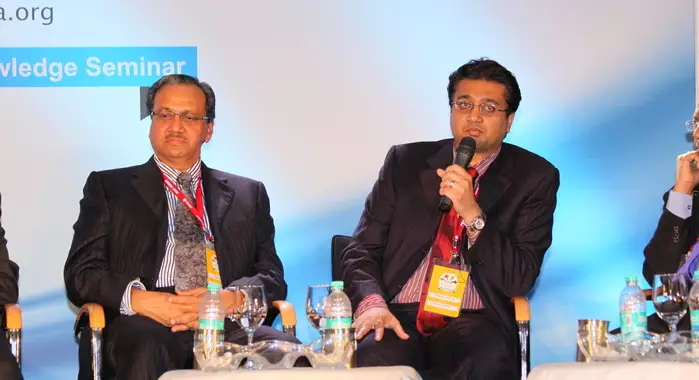What ails a typical family-run business in India? - The Noel D'Cunha Sunday Column
Many print businesses, particularly those run by powerful patriarchs defer succession planning till the nth hour. This leads to an emergency, which may cause the organisational structure to collapse.
This Sunday Column tries to understand the strategic know-how and technical expertise that is required for the succession process
17 Mar 2018 | By Noel D'Cunha
- Zero plan for business hand-over
- No successor in the horizon
- Very high valuation of the business
- Never look outside of the family
- Don’t realise 90% of the industry is cutting-edge
I got a call from an exhausted voice. He requests me to meet him for dinner after my SundayMass. I meet him. The conversation is about handing over the baton to three sons. One determined, the other not interested, and the third plans to settle down in Canada.
After the dinner concluded at the Grand Hyatt, I wondered as to what would happen next.
Two things struck me about our industry. Why do so many owners leave the opinion too late to start discussions or taking firm actions in regards to their business' succession? Also, quite a few people I have met have a very high market value of their business.
My simple thumb rule: Taking sound advice (from an elder in the family or a consultant) is a must - but the earlier the better.
Why?
When Vishal Sikka quit Infosys last year, there was panic.
Why?
Succession planning of Indian business firms seems to be absent. While the concept of succession planning exists in India, most top management have been struggling to successfully put it into practice. When the Infosys CEO exited, it put the company in total disarray.
Who so?
The Indian system of succession planning differs largely from their global counterparts, which begin to hunt for a successor quite a few months in advance.
The point is, a leadership pipeline is critical for any business firm (cricket team and political party and even your friendly neighbourhood tea shop) to evolve into institutions that outlive their founders, feel HR experts.
This is a huge problem in our industry.
Given the large proportion of family-owned print and packaging companies in India, the issue of succession tends to be embroiled in family matters, thereby making it a sensitive topic. Moreover, the survey finds that a large proportion of our print companies have people above 60. This is considered retirement age in most organisations.
As per the CEO Succession Planning in India in 2017, traditionally, these companies (helmed by business families) have seen the next generation of the family taking over the reins from the previous generation. A crucial concern in these cases is the ability of the next generation to steer the company effectively. In several instances, succession has been decided by the bloodline rather than by leadership fitness, which can be detrimental to the company’s long-term interests. However, this is changing. Several large companies and groups – Birla, Godrej, Bajaj, Wipro – have spent years grooming the next generation for a take over of the business. This has resulted in a seamless transition."
The report continues, "Family discord is the biggest risk to succession planning. Therefore, several Indian groups have now resorted to creating a family constitution, which will address the issues of transition in a more structural manner. Groups that have a family constitution include Dabur, Godrej, GMR, and Murugappa."
And finally, the report says, "Some companies, like Asian Paints and Marico, have professionalised the management – the promoters have handed over the day-to-day management of the company to seasoned industry experts."
In our industry, the matter is slightly different.
The question for all family businesses is how they are passed on.
Take the hundred-year-old print firm, XYZ. The two brothers are the fifth generation of his family to run the business. “Our parents are of retirement age and wanted to take a more back-seat approach. It has been a gradual process over the past 15 years,” says brother one.
Then there is PQR, a 45-year-old second-generation commercial printer who found his company in the same situation. “The first generation was looking to retire and we needed to roll out a succession plan. Lots of meetings and discussions later culminated in the daughter of one director and son of another joining forces to replace their fathers,” he says.
And finally, there is ABC, a boutique first-generation firm, put his desire for the transition to the second generation down to opportunity. “I had the opportunity to bring new ideas on board when I was a thirtysomething so now it is time for me to nurture the next generation,” he says.
All I could say to the above three firms is to look at a PriceWaterhouseCoopers (PwC) Family Business Annual Survey. The Survey suggested that 30% of family businesses make it to the second generation, 12% to the third, and 3% to a further generation.
The elephant in the room
For the family-owned businesses, it is succession.
And the way Indian society is, family members find it difficult to talk about succession (and also death insurance and wills), and they can make assumptions about each other’s intentions. This leads to misunderstandings and tension.
Plus there are family relationships which exacerbate the problem. Most family elders do not think about relationship dynamics. Some of the traditional business communities like Marwarisand Gujaratis have drilled these questions into their gene code.
They are constantly asking questions like. Will my children want to take the business over? Are they capable of running it? Is there room for more than one child? Will they fight? How do I deal with ownership if some want to work in the business and others don’t?
These and innumerable such questions will always be present until they’re resolved by a succession process.
Bright spot

Ramesh (l) and Siddharth Kejriwal of Parksons Packaging
There are bright spots in the succession plan conundrum, but the first that comes to mind is Parksons Packaging.
In July 2014, Siddharth Kejriwal, the executive director at Parksons Packaging was promoted as the managing director, and became the head of Parksons’ operation across India. His brother Chaitanya Kejriwal was entrusted with the post of joint managing director. Kejriwal’s father, Ramesh, who held the position of managing director, took up the role as chairman.
Back then Kejriwal had said, our accountabilities and responsibilities are changing day by day within the organisation. “The restructuring was a message to the market that our operational roles within the organisation have changed.”
For the senior Kejriwal, it’s been a long journey of 45 years. He attributes Parksons’ success to his parents from whom he learned the ropes of business along with being honest and humble. "This has also been the culture at Parksons," he says, adding, "The most satisfying aspect of my life has been that we have been successful at keeping our family intact after the restructuring of the family business.”
The commercial printing and playing cards business was hived off into separate companies. The commercial printing business Parksons Graphics went to Kejriwal’s elder brother Radhakishan while the printing cards business Parksons Cartamundi went to his younger brother Sajjan. The packaging business, Parksons Packaging, became a separate company in 1996.
Siddharth says his father continues to be very active and full of energy at work and plays a role of a visionary in the organisation. “We all admire him for his astute business mind and the knack to see the future of our industry with great accuracy. He has always had a keen interest in the emerging trends in print technology and is able to assess the needs of our customers well before time and help adopt and adapt ourselves to any changing trends.”
In summary
Put quite simply, Parksons has demonstrated leadership imperative and a trust among the family members.
The question is: do other companies on the threshold of such a situation have or encourage the next generation to remain in the family business. It’s a monumental challenge and needs some reflecting upon.
Exit Plan
Every business needs a succession or exit plan.
Ask the family members in the business to write the present / future plan on a piece of paper. Compare the points on the paper to see who is aligned and who is not.
Find time away from the business to discuss the future. Family members must know that meetings are convened on neutral territory and that they are expected to speak their minds freely and honestly.











 See All
See All